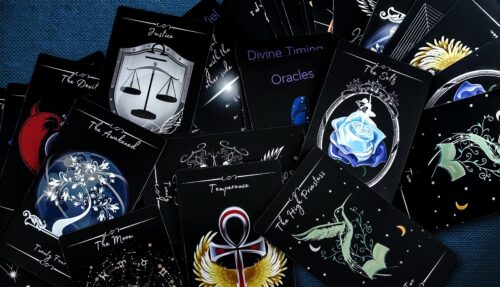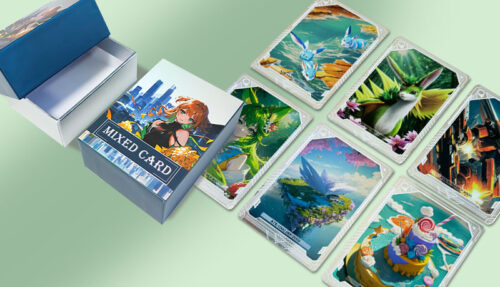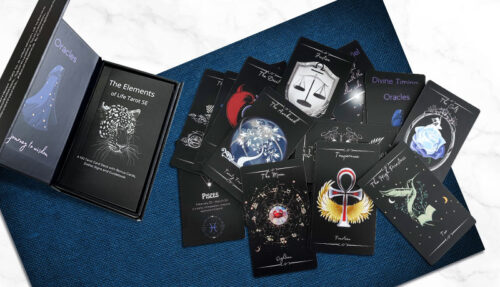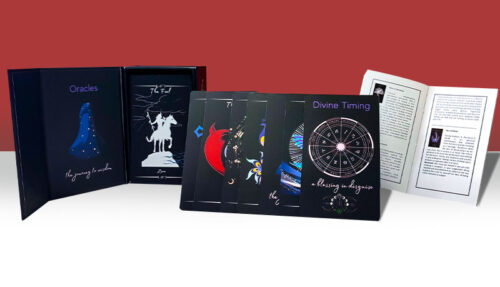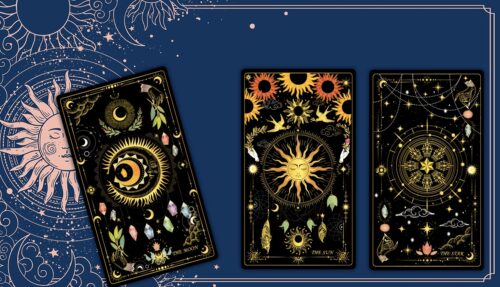We explore the emerging trend of combining tarot cards with roleplaying games and discuss how to design your own
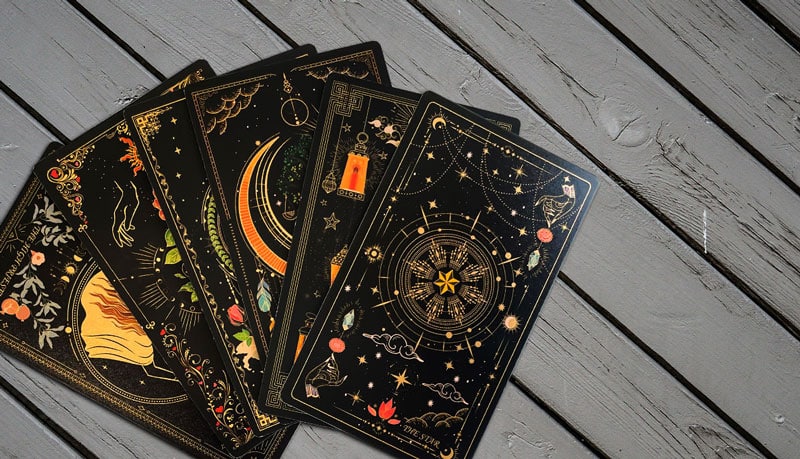
Traditional roleplaying games have stood the test of time and influenced other tabletop and board games, inspired live-action roleplay, and even comics, books, and movies. The secret to the success of roleplaying games is that they offer a platform for storytelling, adventure, and character development, which is unparalleled in other genres. The thrill of assuming the roles of brave heroes or cunning villains is an experience that many enthusiastic, serious gamers crave. By nature, role-players and game designers are creative people always on the lookout for ways to add color and flavor to the game experience through innovation. We’ve been interested in seeing the development, among many designers and players, of the use of tarot cards as a creative tool. Using tarot cards for roleplaying games, with their rich symbolism, mystical allure, and beautiful fantasy art, can add an extra layer of depth and excitement to roleplaying games and contribute new structural and mechanical aspects of play.
The potential of tarot cards in roleplaying game design
Tarot cards have a long history steeped in mystery and fascination. Traditionally used for divination and fortune-telling, these decks comprise 78 cards, each with its own unique imagery and symbolism. In recent years, game designers and players alike have recognized the potential of tarot cards to inspire and enrich their roleplaying experiences. Despite their long association with divination and fortune telling, the tarot has long been used by storytellers, writers, and dramatists alike to help craft the shape and content of modern fables, short stories and novel-length fiction. Writers as diverse as John Steinbeck, Italo Calvino, Stephen King, and Joanne Harris have all been inspired by tarot cards or used tarot cards for writing. By incorporating tarot cards into your games, you can generate plot hooks, create random encounters, design characters, and psychological and emotional depth to the gaming experience, and much more.
How to use tarot cards to generate plot hooks for roleplaying games
One of the most intriguing and useful aspects of tarot cards is how to use them to inspire plot hooks. The open-ended nature of tarot card interpretations—based on a series of archetypal characters and obscure mythical and magical imagery and symbols—allows game masters to create captivating storylines that keep players engaged by tapping into deep psychological realities. And by drawing a card and interpreting its meaning either intuitively or according to a set of pre-planned rules, game masters can introduce unexpected twists and turns into the game narrative.
So, for example, the Seven of Swords may suggest a hidden betrayal within the questing group, while the Two of Cups could show a blossoming romance between two characters. By incorporating these plot hooks into your games, as a game master or a game designer, you can create memorable and unpredictable adventures for their players, which go beyond the typical expectations.
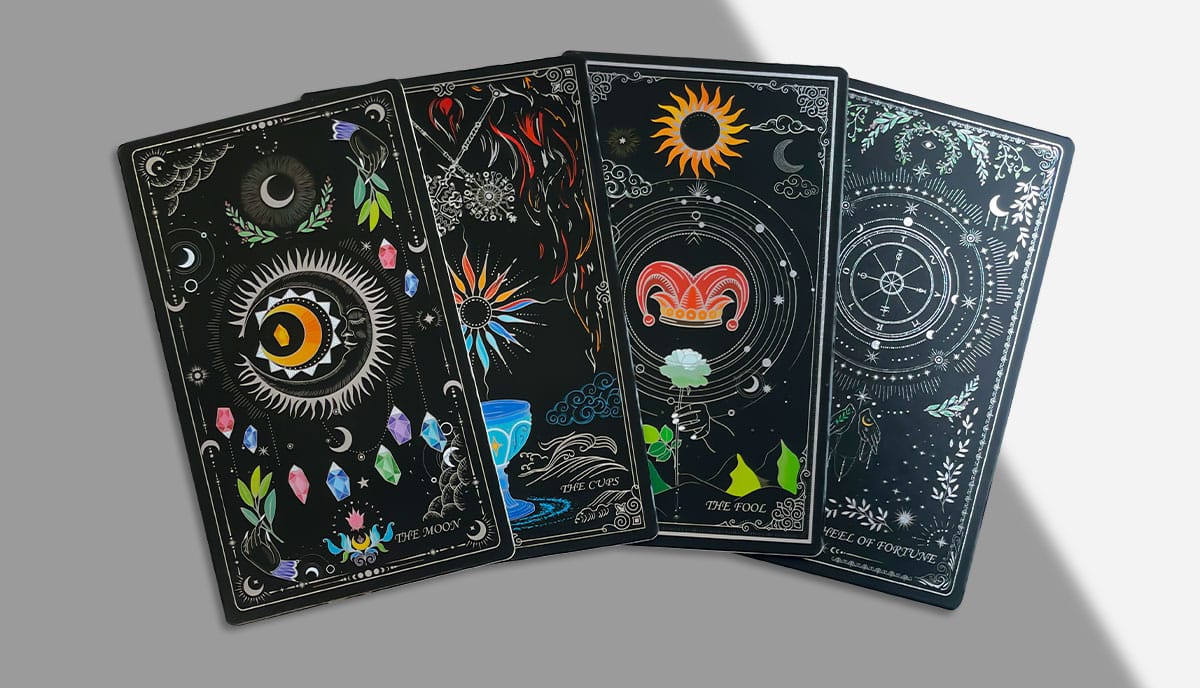
How to use tarot cards to generate random encounters in roleplay
Random encounters are a staple of many roleplaying games—whether with monsters, helpers, “red herrings” or clues, places, items, and more—and they are traditionally determined by the role of the dice. They can add excitement and unpredictability to the gameplay, which keeps everybody on their toes and makes the game more interesting for the game master as much as the players. But put the dice away and grab your tarot cards for roleplaying games, and you’ll soon discover that they can be a valuable tool for generating these encounters.
By drawing a card from the deck and interpreting its meaning, game masters can create unique and unexpected encounters for their players. For example, drawing the Death card could lead to an encounter with a powerful undead creature, while the Tower card may signify a crumbling structure players must navigate. By embracing the symbolism of tarot cards, game masters can create memorable and immersive encounters “on the hoof” which add depth, twists and turns, and that the characters can’t predict.
How to use tarot cards to create roleplaying characters
Character creation is a vital and thoroughly enjoyable aspect of any roleplaying game setup. It is essential to develop well-rounded and interesting characters that players can connect with, whether they’re player or non-player characters. Tarot cards can have a special function as a tool for character design, offering insights into their backgrounds, motivations, and personalities. By creating a “character spread” with randomly selected cards and using the symbolism and imagery as sources of information, you can draw out meaning that players and game masters can use to build stronger character profiles and gain a deeper understanding of the roles they’ll play.
So, for example, you might design a spread with a central card to represent the characters themselves and then four other cards at the four corners of the compass. These other cards would each say something about the character’s skills, personality, strengths, and weaknesses. The card in the East would describe their intellectual powers; in the South, their willpower and discipline; in the West, their intuition and compassion; and in the North, their wisdom and knowledge. You can derive further nuance and depth by combining the suits and directions and examining how they interact. So, if you got a card from the “staves” suit (symbolic of willpower, self-direction, and discipline) in the West quarter (associated with intuition, containment, and compassion) what could that imply about your character?
For the central card, the Queen of Swords, for example, may suggest a character who values honesty and direct communication, while the Hierophant could indicate a character who seeks knowledge and wisdom; a shaman or a wizard, perhaps. How you play it out is up to you and your creativity and imagination. But by incorporating these tarot-inspired traits into characters, players can create more nuanced and engaging roleplaying experiences.
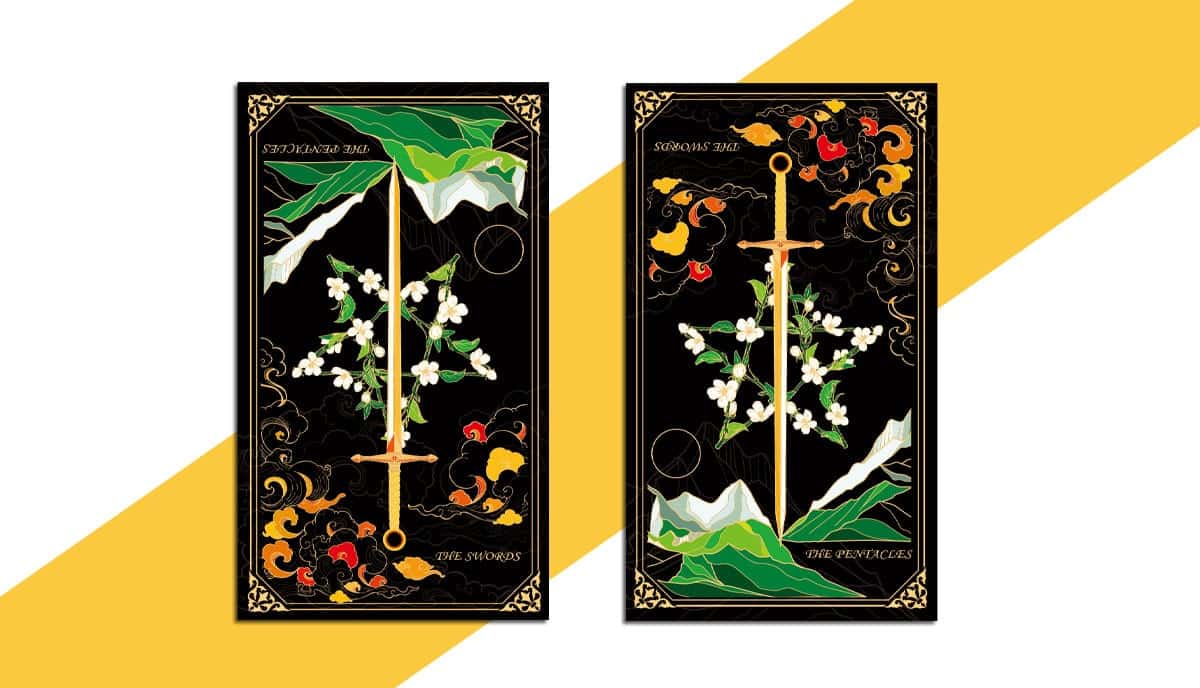
Games that include tarot cards
While this use of tarot cards in roleplaying games started out as an improvisation of inspired players in bedrooms, parlors, kitchens, cafes, and basements, professional game designers soon picked it up. Several published roleplaying games incorporate tarot cards as a core mechanic or an integral part of their settings. If you’re a game designer or an aspiring game designer, adding a custom printed tarot deck into your design can make your game extra-special and add value to the gameplay experience.
• Engel
Engel, a German originated roleplaying game, uses a tarot-based mechanic—called the “Arkana” although they don’t follow the traditional 78 cards of the original tarot—to enhance gameplay. Although the original rules were in German, an English translation featuring a d20 conversion was made available more recently. In Engel, players draw custom cards featuring images and names from the Engel mythos to determine actions and outcomes.
• Ravenloft
Ravenloft, a popular Dungeons & Dragons campaign setting, has its own “Tarokka” deck for fortunetelling. This deck, featured in Forbidden Lore and the red-boxed Campaign Setting, adds an extra layer of mystery and intrigue to the game through incorporating an interesting and powerful “destiny” dynamic. Game masters can use the Tarokka deck to determine the fates of their players, create cryptic prophecies, or guide the direction of the storyline. The Tarokka deck has become an iconic element of Ravenloft, immersing players in a world of dark magic and mysterious destinies which devotees of the setting love.
• Fortune's Fool
Much more closely related to the traditional cards, Fortune’s Fool, developed by Pantheon Press, is a fantasy roleplaying game that revolves around the use of a custom tarot card deck. In this game, the tarot cards are used to resolve actions and empower characters with skills, fates, and opportunities. Players draw cards to determine the success or failure of their actions, with each card offering unique outcomes and consequences for the player and the game as a whole. Fortune’s Fool provides an unpredictable gameplay experience, where the turn of a card can change the course of the adventure.
• Castle Falkenstein
Castle Falkenstein, a steampunk-themed roleplaying game, can also be adapted to incorporate tarot cards. In this game, players have stat/skill values and a hand of cards that they can play to enhance their abilities. By matching the suit of the card to the action, players can add their card values to their skills, increasing their chances of success. The addition of tarot cards adds an extra layer of strategy and decision-making, making Castle Falkenstein a game of both wits and luck.
How to get the most out of tarot cards for roleplaying games
To maximize the impact of tarot cards in roleplaying game design, it’s important to dedicate a specific deck to the game at hand. This means building the tarot concept into the game mechanics from the outset and thinking with care about how it will align with theme, story structures, and other essential factors. It’s usually better to design and print a custom tarot deck to incorporate into your game, as it helps with the overall design integrity and means that you can tailor the cards to your specific game’s needs.
Incorporating tarot cards into roleplaying games requires a certain level of creativity and open-mindedness. As we’ve seen, Tarot cards have the potential to unlock a new level of creativity and excitement in roleplaying games. From generating plot hooks to designing characters and creating random encounters, tarot cards offer a versatile and inspiring tool for game masters and players alike. By incorporating tarot cards into your game design, you can develop new realms of roleplaying experience and give your next game a powerful added dimension.
If you feel you’re ready to dive deeper into game design theory, then read, How to Design a Professional Board Game. It’s a long-form, in-depth post that covers every aspect of board game design and development. Book mark it and come back to it several times as you work through it. It will save you a lot of money in expensive books and courses, too!
When you’re ready to print your board game and manufacture your components, including your custom tarot cards, talk to us. We’ve got over 25 years’ experience in the industry, helping creative game designers just like you to realize their ideas. It’s free to talk and when you’re ready, we’ll give you a no-obligation quote on the work, so that you know upfront exactly what’s involved. Get in touch. We can’t wait to work with you!






